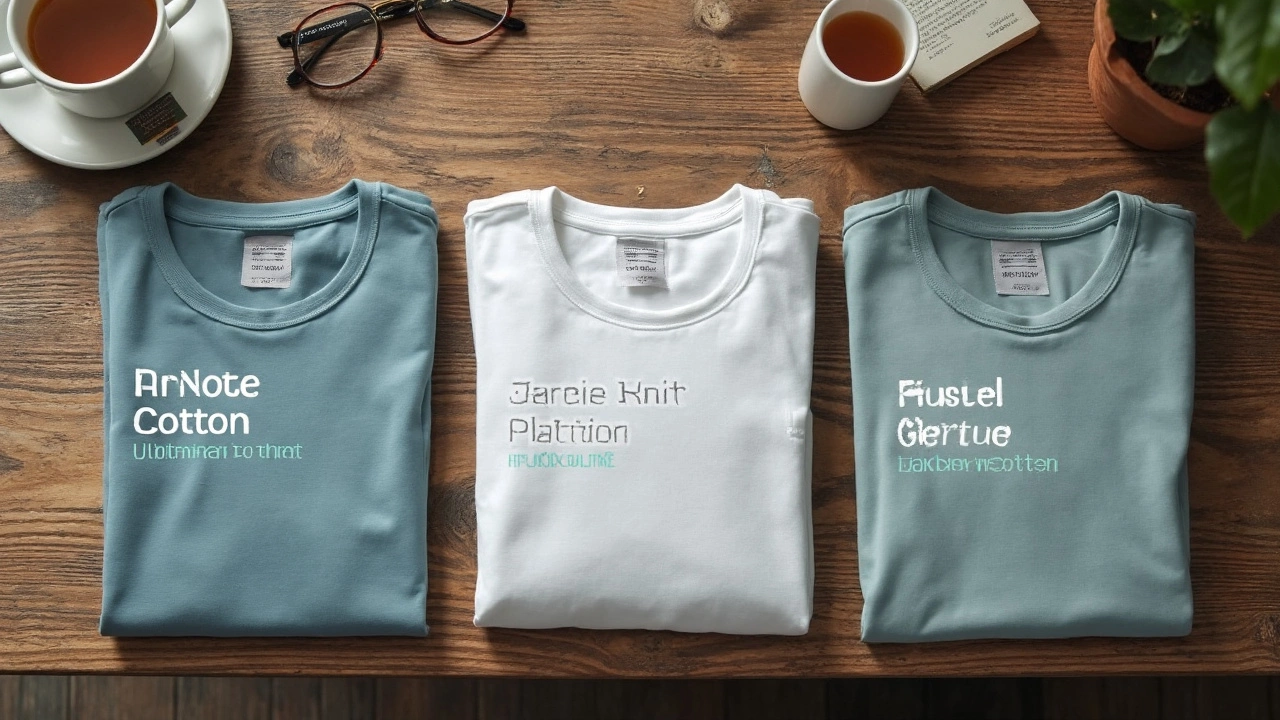t-shirt quality: a quick guide to picking shirts that last
Ever bought a tee that felt great at first but fell apart after a few washes? You’re not alone. The secret is knowing what to look for before you click ‘add to cart’. Below we break down the main clues that tell you a t‑shirt is worth keeping.
Fabric matters more than the label
Most quality tees are made from 100% ringspun cotton or a cotton‑blend with a small amount of polyester. Ringspun cotton feels smoother because the fibers are twisted tighter, which reduces pilling. If you see “combed cotton”, that’s also a good sign – the fibers have been brushed to remove short pieces, making the shirt softer and stronger.
Check the weight too. A weight of around 150‑180 gsm (grams per square metre) is solid for everyday wear. Anything lighter feels cheap and may shrink a lot, while heavyweight shirts can be stiff and uncomfortable.
Stitching and details you can actually feel
Good stitching is tight and even. Look at the seams – they should be straight with no loose threads. A reinforced double‑needle stitch at the shoulder and hem adds durability. If the shirt has a tag‑less label or a printed label, that’s a comfort Bonus – no itching tag at the neck.
The neckline is another tell‑tale spot. A ribbed crew neck that stays in shape after washing shows quality. If the collar rolls or stretches out quickly, the fabric blend is probably too cheap.
Fit plays a big role in perceived quality. A well‑cut tee follows the natural line of your body without being too tight or baggy. When you try it on, the shoulders should sit exactly at the edge of your own shoulders. The sleeves should end at the middle of your biceps and not pull.
Color retention is often overlooked. High‑quality tees use pigment‑based dyes that stay vibrant after multiple washes. If the color looks washed out right away, the dye is likely cheap and will fade fast.
Lastly, think about care instructions. A tee that says “machine wash cold, tumble dry low” is built to survive regular laundry. Avoid shirts that require hand‑wash only – they’re usually delicate and not meant for everyday wear.
By keeping these points in mind, you’ll spend less time fixing shirts and more time looking good. Remember: feel the fabric, check the weight, inspect the stitching, and test the fit. That’s the fast track to real t‑shirt quality.
-
Best Quality T-Shirts: Which Brand Actually Delivers?
Not all t-shirts are built to last, and some brands have cracked the code for comfort, fit, and durability. This article breaks down what really makes a t-shirt high quality, from the type of cotton used to the little details that brands usually skip. You’ll see side-by-side comparison of top names, what to check for in-store, and tips to get your money’s worth. Skip the guesswork and learn what actually matters before you drop cash on your next shirt. This guide focuses on real differences you’ll notice after a few washes, not just marketing hype.
